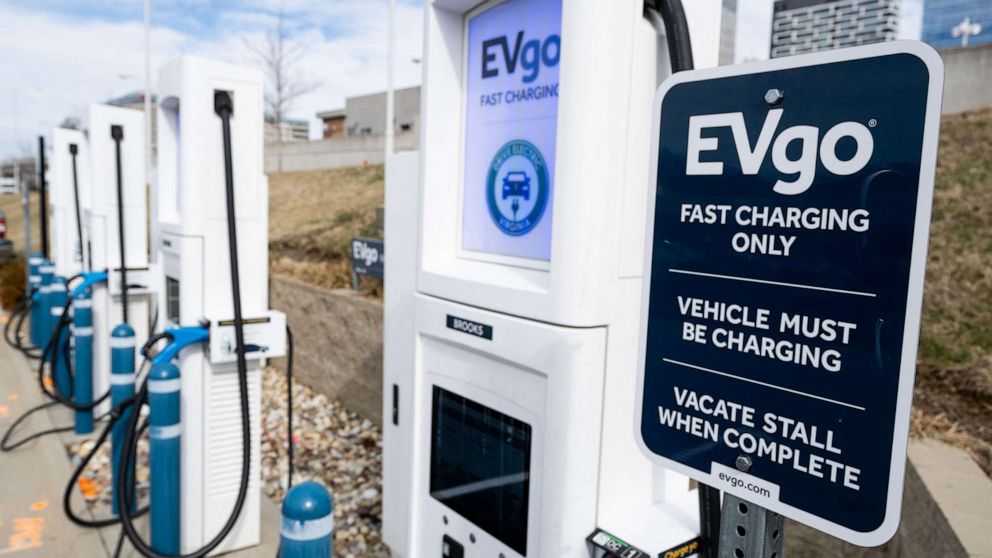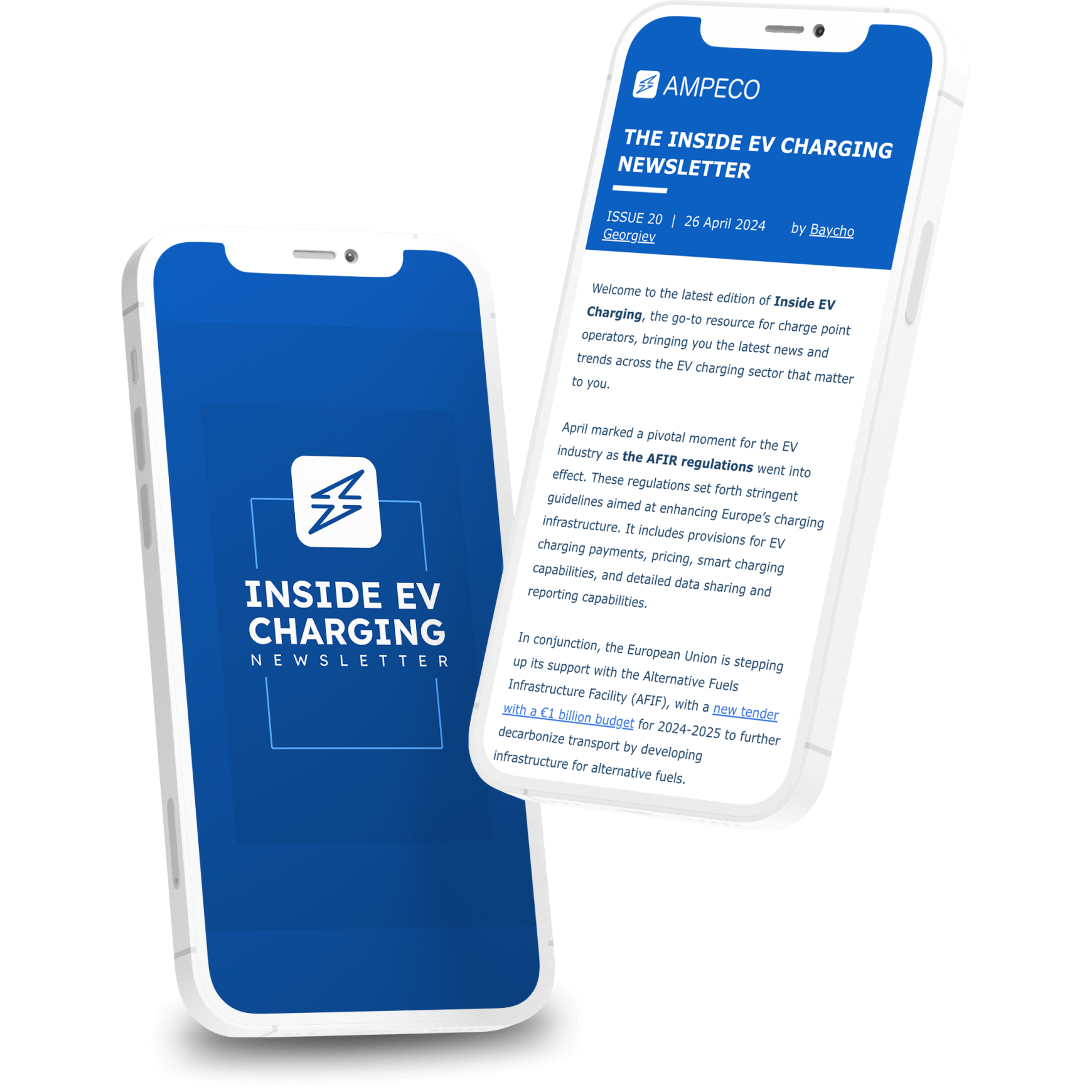Leading EV Charging Information: Key Updates on Facilities and Technology

Recent Developments in Fast-Charging Innovation

Additionally, advancements in battery innovation, consisting of improved thermal administration systems and greater energy density batteries, enhance fast-charging capabilities. These advancements minimize the risk of battery deterioration throughout rapid charging, making sure long life and performance for EV owners.
Furthermore, the assimilation of clever charging services is improving customer experience, enabling real-time monitoring and dynamic prices versions. EV Charging news. This versatility permits chauffeurs to enhance charging prices and times based upon grid need
As automakers continue to buy fast-charging networks, the collaboration between market stakeholders is vital. Collaborations in between billing terminal providers and automotive producers are paving the method for substantial protection, eventually promoting a much more robust EV community. These developments are essential in supporting the shift to sustainable transportation.
Government Campaigns for Billing Growth
Government efforts play a vital function in the expansion of electrical lorry (EV) billing facilities, assisting in the shift to sustainable transport. Numerous federal and state programs are being executed to enhance billing access, minimize the financial burden on customers, and advertise the adoption of electrical automobiles.
Significantly, the U.S. federal government has allocated substantial financing through the Framework Financial Investment and Jobs Act, which allocates $7.5 billion for EV billing network advancement across the country. This funding is intended at deploying countless new billing stations, particularly in underserved locations, thus addressing array stress and anxiety amongst prospective EV buyers.
Furthermore, various states are establishing regulations to streamline the permitting procedure for charging terminal setups, which is crucial for speeding up deployment. Rewards such as tax credit ratings and discounts for both consumers and services are also being introduced to urge the installation of billing infrastructure.
Additionally, public-private collaborations are increasingly ending up being an emphasis, leveraging private financial investment to enhance government financing. These campaigns underscore a collective strategy important for developing a comprehensive and efficient EV charging network, ultimately adding to a greener and even more lasting future.
Innovative Battery Solutions Enhancing Efficiency
Reinventing the landscape of electrical lorry (EV) technology, ingenious battery options are dramatically enhancing efficiency and performance. Advancements in battery chemistry, especially with lithium-sulfur and solid-state batteries, are causing raised power thickness, which allows for longer ranges and faster charging times. These new battery types have the potential to surpass conventional lithium-ion batteries by providing higher capabilities while decreasing weight, consequently enhancing general car effectiveness.
Furthermore, advancements in battery administration systems (BMS) are optimizing energy usage and expanding battery life-span. Smart formulas keep track of battery health and wellness and performance, enabling real-time changes to billing and releasing processes. This not only boosts the performance of the battery however likewise guarantees a more lasting and reputable energy resource find out here for EVs.
Moreover, the integration of reusing innovations is dealing with the ecological impact of battery production and disposal. Developments in second-life applications for EV batteries are promoting their usage in energy storage space systems, adding to a circular economic situation.
As these ingenious battery services continue to advance, they guarantee to change the EV market, making electrical vehicles extra enticing and easily accessible to a broader target market while supporting international sustainability goals.

Collaboration Between Automakers and Charging Networks
Acknowledging the important requirement for a durable billing facilities, automakers are progressively working together with charging network companies to improve the EV ownership experience (EV Charging news). These partnerships aim to develop a smooth billing environment that profits consumers and supports the transition to electrical lorries
Significant automobile brands are joining pressures with well-known billing networks to broaden their charging terminal protection, making sure chauffeurs have access check here to trusted and practical charging options. As an example, partnerships with networks like ChargePoint and Electrify America allow car manufacturers to integrate charging remedies directly into their lorries' navigation systems, guiding customers to the nearby stations and giving real-time accessibility updates.
Furthermore, these cooperations frequently cause the advancement of fast-charging modern technologies that substantially reduce the time required to recharge an EV. By merging resources and know-how, automakers and billing networks can introduce faster, developing solutions that satisfy the expanding demand for electric flexibility.
Furthermore, joint efforts might also cause even more standardized charging procedures, which can alleviate consumer complication and advertise broader EV fostering. Generally, these calculated partnerships are critical in developing a reliable and user-friendly billing infrastructure that meets the requirements of an increasing electrical vehicle market.
Challenges Dealing With EV Billing Framework
As the electrical lorry market continues to grow, several difficulties are emerging that impede the growth of a thorough billing framework. Among the main obstacles is the insufficient number of charging stations, particularly in underserved and rural urban areas. This gap creates range anxiety amongst potential EV customers, deterring them from making the button.
In addition, the absence of standardization in billing modern technology makes complex the framework landscape. Variants in plug types and charging speeds can develop complication for customers and boost operational complexities for charging network drivers. The integration of billing terminals into existing electrical grids postures substantial difficulties. Numerous regions encounter capability limitations, requiring significant investments in grid upgrades to accommodate raised need.
Another pushing issue is the high price connected with the installation and upkeep of charging terminals, which can be a barrier for both public entities and exclusive companies. Regulatory obstacles and zoning constraints can delay the implementation of billing facilities, restraining progress in broadening essential services. Resolving these challenges will certainly be critical for fostering a durable EV ecosystem that sustains the transition to sustainable transport.
Conclusion
Finally, the continuous improvements in EV billing modern technology, supported by significant government initiatives and ingenious battery services, are vital for the development and performance of electrical lorry framework. Cooperations in between car manufacturers and billing providers further enhance terminal insurance coverage, dealing with the expanding need for easily accessible billing choices. In spite of challenges that continue within the EV billing landscape, these growths symbolize a favorable trajectory towards a more reliable and lasting electric vehicle ecosystem.
Innovations in billing facilities have led to the development of ultra-fast battery chargers qualified of providing up to 350 kW of power, significantly reducing billing times. Variations in plug types and billing speeds can create complication for individuals and increase functional complexities for charging network drivers.In final thought, the ongoing innovations in EV charging technology, sustained by significant federal see this here government efforts and innovative battery remedies, are important for the expansion and performance of electric lorry facilities. Collaborations in between automakers and billing service providers better improve terminal protection, resolving the growing need for available billing options. Regardless of challenges that continue within the EV charging landscape, these advancements indicate a positive trajectory in the direction of a more sustainable and reliable electrical car ecological community.
Comments on “Key Innovations in the EV Sector You’ll Find in Today’s Buy EV Charging news”